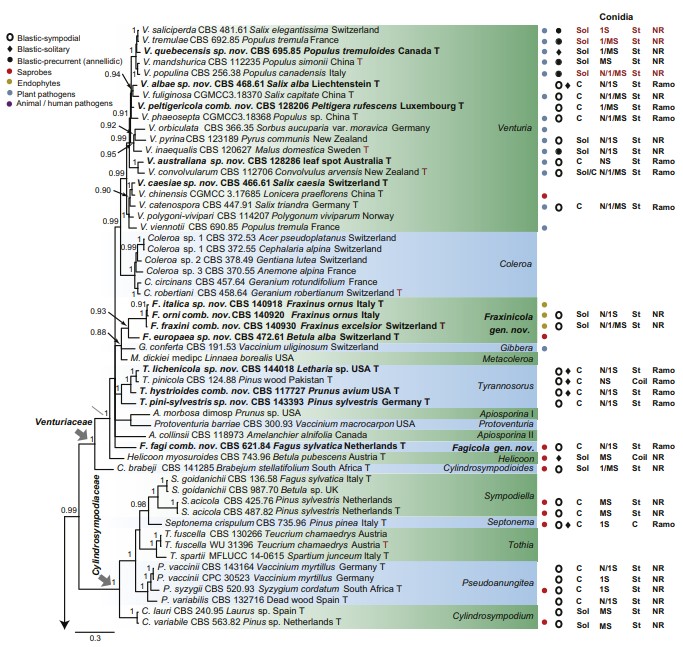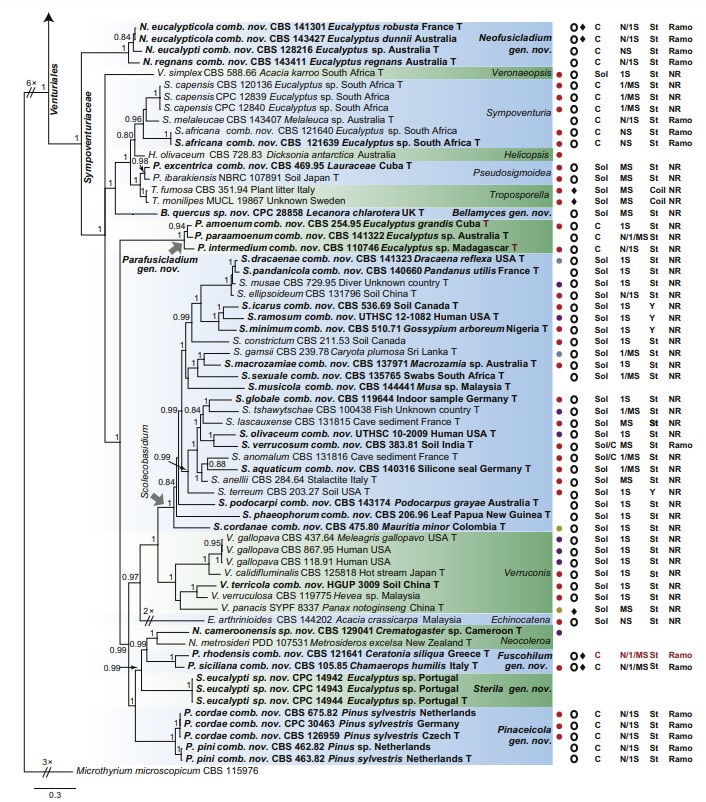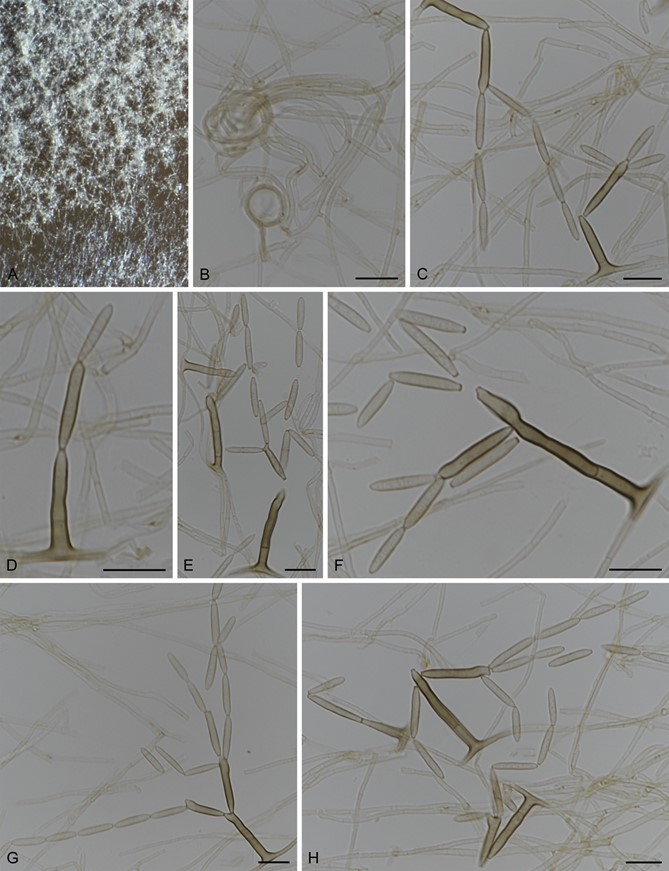Pinaceicola pini (Crous & de Hoog) Crous, M. Shen & Y. Zhang ter, comb. nov.
MycoBank number: MB 831556; Index Fungorum number: IF 831556; Facesoffungi number: FoF 12046; Fig. 11.
Basionym: Fusicladium pini Crous & de Hoog, Stud. Mycol. 58: 210. 2007.
Synomym: Fusicladium ramoconidii Crous & de Hoog, Stud. Mycol. 58: 211. 2007.
Description and illustration: Crous et al. (2007b).
Typus: Netherlands, Baarn, De Vuursche, on litter needle of Pinus sp. (Pinaceae), 12 Apr. 1982, G.S. de Hoog (holotype CBS H-19908, culture ex-type CBS 463.82).
Additional material examined: Netherlands, Baarn, De Vuursche, on needle of Pinus sylvestris (Pinaceae), 12 Apr. 1982, G.S. de Hoog (dried culture CBS H- 1610, ex-type culture of Fusicladium ramoconidii CBS 462.82).
Notes: Fusicladium pini and F. ramoconidii were introduced as different species based on differences in their ITS sequences (13 bp), and the absence of ramoconidia in F. pini (Crous et al. 2007b). However, the multigene data [Fig.1; ITS sequences (identity: 99 %), LSU sequences (identity: 100 %), tef1 sequences (identity: 99 %), tub2 sequences (identity: 99 %), rpb2 sequences (identity: 99 %)] suggest them to be conspecific belonging in the newly erected genus, Pinaceicola.

Fig 1. Consensus phylogram (50 % majority rule) of 691 952 trees resulting from a Bayesian analysis of the combined alignment of ITS, LSU, tef1, tub2 and rpb2 sequences of Venturiales. Bayesian posterior probabilities (PP) > 0.80 are shown at the nodes and the scale bar represents the expected changes per site. Some branches were shortened to facilitate layout. The tree was rooted with Microthyrium microscopicum (CBS 115976). Culture collection numbers, substrates and countries are indicated behind the species names. Those highlighted in bold are new taxa or new combinations proposed in this study, and type strains are marked with “T” (ex-type in black, ex-epitype in red). Relevant morphological characteristics plotted are abbreviated as follows: Sol – conidia solitary, C – conidia in chains, NS – aseptate conidia, 1S – 1-septate conidia, MS – multi- septate conidia (septa ≥ 2), St – straight or slightly curved conidia, Coil – coiled conidia, Y – Y-shaped conidia; Ramo – ramoconidia present, NR – ramoconidia not observed; ? – asexual morphology not available (either from references or from sporulation induced in this study); and morphological characters plotted in red means strains failed to sporulate in this study and plotted values are taken from the original description, observation of this study or related references. Other characteristics are explained in the legend.

Fig 1. (Continued).

Fig. 11. Pinaceicola pini (culture ex-type CBS 463.82) asexual morph. A. Colony on OA. B. Hyphal coil. C–H. Sympodial conidiogenous loci and concatenated conidia arising from conidiogenous cells. Scale bars: B– H = 10 μm.
